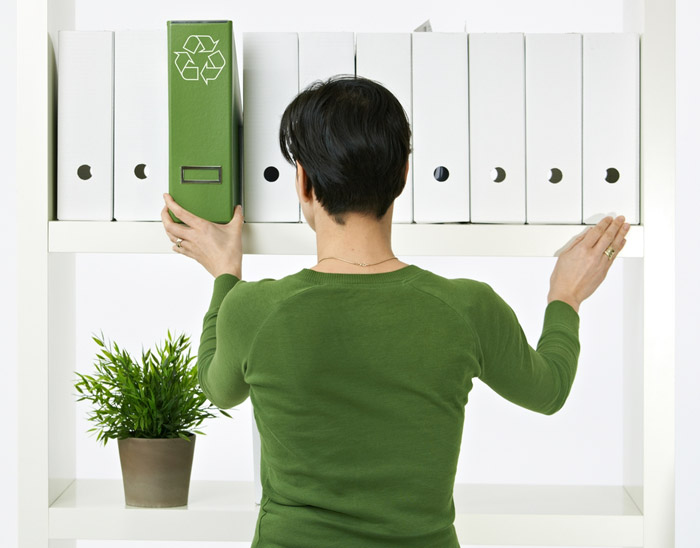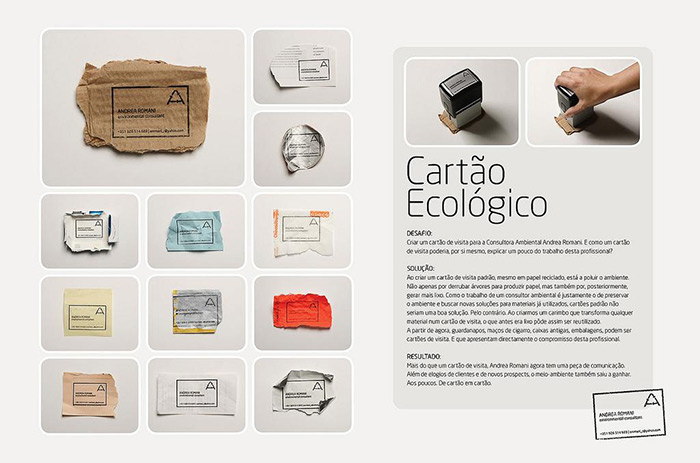
2014’s hottest trends in graphic and web design revolve around reducing visual clutter and minimizing work for users. A new frontier in design, though, is going to be reducing pollutants and minimizing environmental waste.
Hopefully, your design firm is already aware of the need to reduce your environmental impact. Reducing waste is necessary for every business, but designers have a unique opportunity to help the planet. By implementing sustainable design practices, it’s possible to reduce negative effects on the environment while creating beautiful design. This is your guide for incorporating sustainable practices into both your office and your graphic design.
Working in a green office
There are environmentally friendly decisions your organization should make to keep from wasting energy. Find out how you can green your studio with this guide from ReNourish, and start with these four tips:
1. Use plant-based materials – For those seeking to reduce waste, there are good practices in place beyond basics like recycling. When partnering with a publisher, choose one who uses biodegradable plant-based materials rather than eco-unfriendly plastic. Finding sustainable publishers is getting easier as the industry shifts towards more green practices.
2. Choose a green printer – In the last few years, innovations in plant-based inks and solvents have made sustainable printing easier than ever before, while reducing the toxic chemicals that used to be a necessary evil for the printing industry.
3. Print out less – The mobile revolution has happily reduced the need for paper. Since consumers can pull up whatever they want on their phones, there’s less need to print out necessary information. If your design can stay online, rather than needing to be printed out, that’s paper that won’t end up in a landfill.
4. Find a sustainable web host – If your company wants to stay paperless and eco-friendly, it should work with a green webhost. Since “green” and “sustainable” are popular marketing buzzwords, it’s important to make sure that companies are walking the walk. Fortunately, there are guides that rate web hosts on their commitment to principles of sustainability.

Creating sustainable designs
Getting your office to reduce waste and use a green printer are great steps, but the next frontier is sustainable graphic technique. Green practices aren’t just limited to taking your office paperless, they begin with your designs.
The need to reduce waste is an opportunity to create memorable new designs. A perfect example is this business card that went viral online. This environmental consultant’s design meshed perfectly with an environmentally friendly idea: a business card that could be stamped onto any piece of recycled paper.

Image courtesy of ptFolio / Flickr
As a writer for ECommerce says about the pivotal design trends for 2014, “clean beats fancy.” This a perfect time to incorporate sustainable practices because simplicity is making a comeback.
1. Reduce text – Reducing text will save on ink and paper if it’s printed out—and it jibes perfectly with the trends for minimalist navigation, less text, and serif-free typefaces. If there’s a lot of blank sprawl, you can bring your design in tighter to make a more economic use of paper.
2. Reduce ink – Apply the same resource-consciousness to your color palette.Monochromatic web design is very popular, and a tone-on-tone color scheme lends itself to reduced ink usage. A monochromatic line drawing instead of a multi-color image is a more resource-conscious design element.
3. Simplify your images – The mobile revolution is pushing design trends in this direction—flattening images to reduce color gradients. A design expert explaining to Business Insider what made the best logos effective said “gradients are my worst nightmare.” Gradients create more work for a designer, visual clutter, and make reducing ink usage more difficult. Go a step further and save additional ink by leaving your edges unmarked, instead of printing with a full bleed.
4. Make it smaller – If there’s something that has to be printed, like a business card, make it smaller and increase the chances that it will get a second life. For companies outside stodgy industries like law or finance, there’s more leeway to experiment with different sizes. Instead of the traditional 3.5? x 2? cards in the US or 55mm x 85mm in Europe, try 2” x 1”.
5. Give your product a better chance at a second life – If your company is staking a claim on green design, you can take your business card to the next level. Plantable cards on seed paper are the ultimate ecological statement as well as a memorable way to make your business stand out as an eco-friendly firm.
The ecologically conscious will want to create green-friendly designs that are still visually appealing and memorable. Fortunately, current design trends mean that this goal is easy to achieve. By incorporating some of these sustainable practices, your company will look good while helping preserve the Earth.
Has your firm incorporated any of these practices? Or have you discovered new ones? Tell us about them in the comments.
